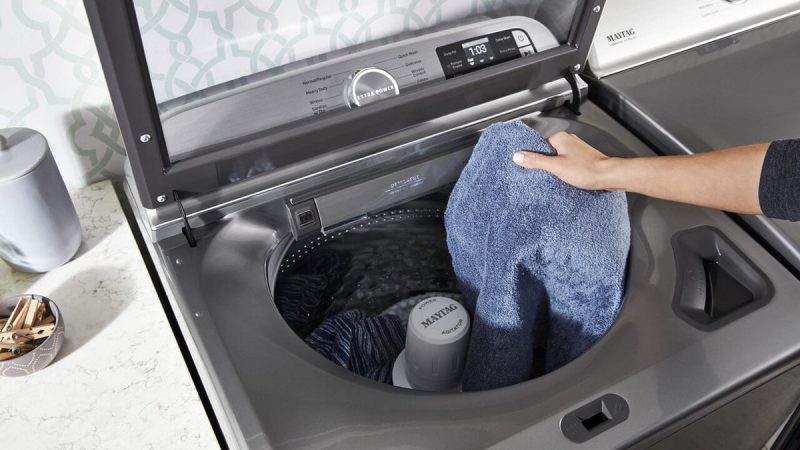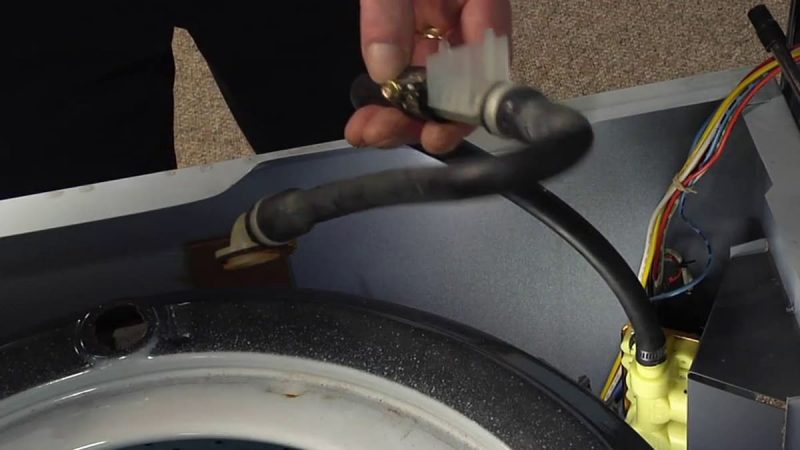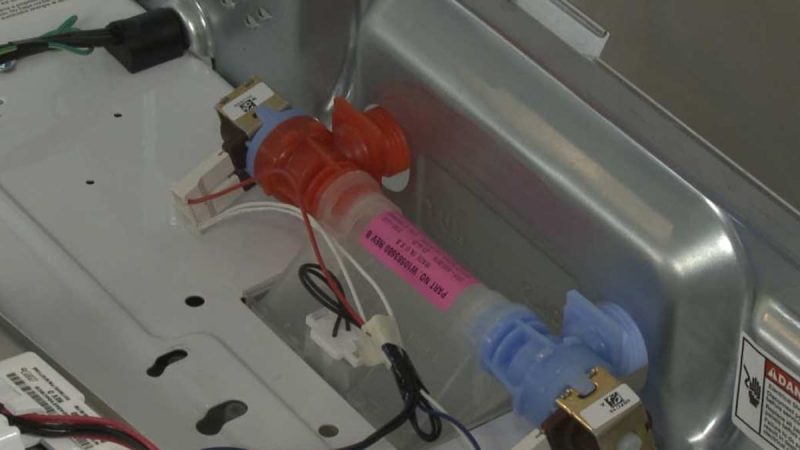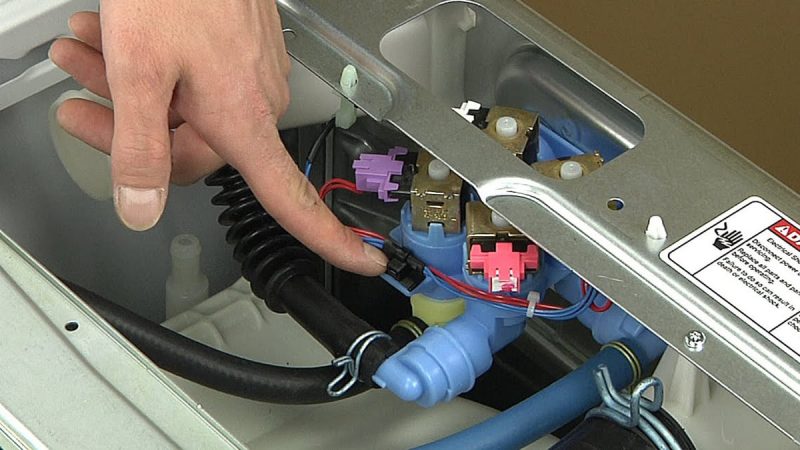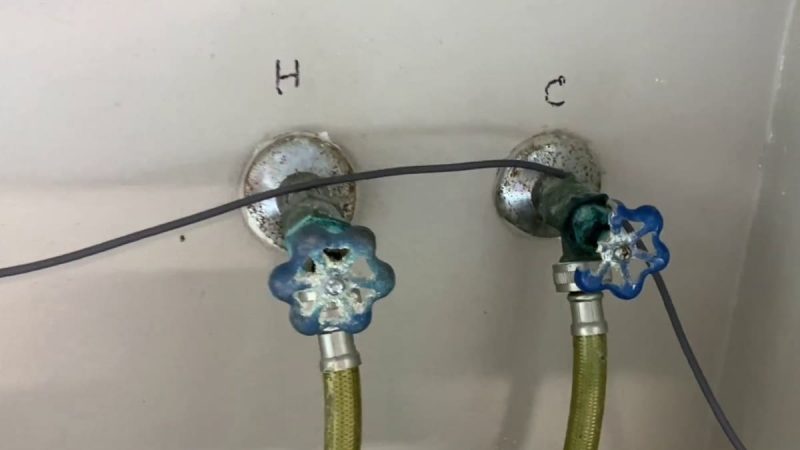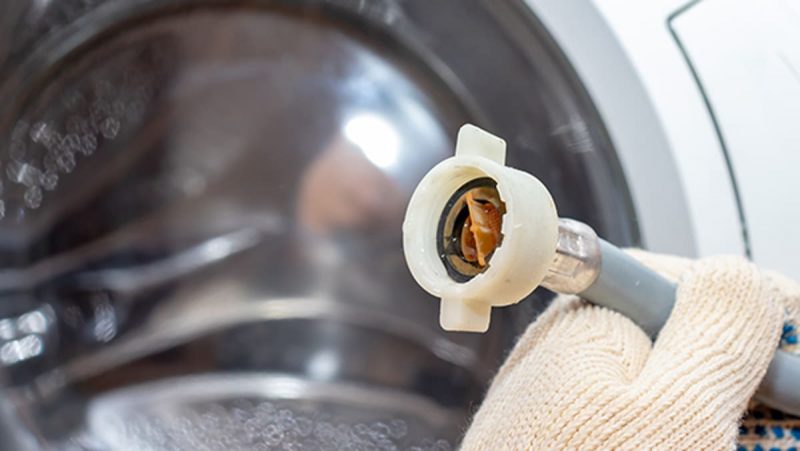For the normal operation of the automatic washing machine, a constant supply of water is important. If this task is not performed or is performed intermittently, you will not be able to clean clothes or linen. This material describes the reasons why the washing machine drum cannot fill with water. You will also learn what to do to fix the problem.
Here are the most common situations when there are problems with filling out the washer:
- the door is not blocked – the water filling starts only when the mechanism that fixes the cover is activated;
- one-time failure of the control unit – quickly eliminated if the machine is disconnected from the network for 10-15 minutes;
- no water due to central shutdown;
- breakdowns in the water supply;
- problems with filling hoses;
- failure of the water supply valve;
- problems with cold/hot water taps;
- improperly installed plumbing and sewerage systems.
Important! Any repair of washer (and household appliances in general) should begin with its de-energization. This reduces the risk of electric shock and injury. The second important step is to turn off the supply of hot and cold water to the machine.
Inspection of the plumbing system
For washer to perform its primary function, it needs clean water. For some models, cold water is sufficient because they have a built-in heating element. Other machines require a continuous flow of cold and hot water from a central plumbing system. Moreover, not only the fact of fluid intake is important, but also the optimal level of pressure. When all indicators are normal, water is poured into the drum as many times as required throughout all stages of washing.
First you need to evaluate the quality of the water supply from the central system. Open several faucets located in your house, it is desirable that they are not very far from each other. If the water flows in a thin stream or intermittently, there is a problem and it affects the filling rate of the washing machine drum.
Next, you need to find out if these are problems at the level of your housing, the whole house (if it is an apartment building), or interruptions in the central water supply system of your locality. With external factors, you can’t do anything until the management company fixes the breakdown.
With a local problem, it is worth determining what caused such poor water flow. Probably, there are breakdowns of other plumbing or pipelines. Because of them, water leaks, and the liquid does not reach the washer. In the absence of professional skills and knowledge, it is better to seek help from a master.
Inlet hose problem
The water supply hose is attached at one end to the central water supply system, and at the other end to the water inlet valve on the washing machine. It is made of rubber and securely connected to the holes specially provided for it. In some models, not one, but two inlet hoses.
If water does not enter the drum through the rubber hose, the most likely causes of the problem are its kink or blockage. When the washer is too close to the wall, the hose can become very bent, which will prevent the normal flow of water. This part also wears out over time, which causes fluid to leak, and it does not reach the drum.
The only way out of the situation is to replace the water supply hose with a new one. Its price is not too high, and a person with minimal skills in working with tools will cope with the task. Your actions:
- Shut off the water in the house or directly near the machine and unplug the washer cord from the outlet.
- Unscrew the hose at both ends.
- Connect the new hose and tighten the fasteners well.
- Leave at least 15 cm between the wall and the washing machine so that the inlet hose hangs freely.
Intake valve problem
This part is a housing with a membrane and a coil. It provides fluid access to the washer. When the valve receives a signal to start washing, it opens and allows water to fill the drum. As soon as the liquid level becomes sufficient, the inlet valve closes and the water flow stops. The place of the inlet valve is on the back of the washing machine immediately behind the holes to which the inlet hose is screwed.
It was previously mentioned that some Maytag models have two sources of water supply – cold and hot. In such appliances, both inlet hoses are connected to one inlet valve on the back of the washing machine. For this part to work, water must flow from the system at a certain pressure. It follows from this that in case of pressure problems, the intake valve will not be able to function in principle.
The second reason for the breakdown is clogged meshes in the water supply valve. They trap large impurities that pollute water. If there is no such mesh, debris particles will fall into the washing machine and lead to its breakdown.
The last likely cause of valve problems is the actual failure of the part. Most often, the coil fails. It burns out due to prolonged use of the washing machine.
Start the diagnosis by checking the water pressure in the house. If it is weak, there may be a problem with some other plumbing in your home. Next, clean the filter inside the water inlet valve, removing any stuck particles from it. If after this the situation has not changed, you will have to install a new water supply valve:
- Remove the back panel of the instrument.
- Disconnect the electrical wires from the valve and then unscrew all fixing screws.
- Install the new valve in its place and reverse the above two steps.
Inspection of hot and cold water faucets
The stopcock cuts into the plumbing system, and an inlet hose is connected to it. A tap is needed to quickly shut off the flow of liquid into the washing machine in the event of a breakdown. They are also used when you need to disconnect the inlet hose connected to the washer.
If your Maytag model requires both cold and hot water, then there will be two taps instead of one – blue and red. When these taps are open, water enters the drum of the machine without any problems.
The two most common faucet problems are:
- They are completely closed or not open wide enough. Remember that in order to fill the Maytag washing machine with water, both taps (hot and cold) must be open at the same time.
- They are clogged or broken. If this happens, water will flow through them intermittently or in a thin stream. Because of this, the washing machine cannot fill properly.
What can you do on your own in this situation? Make sure the taps are fully open. If the problem persists, then you will have to replace them with new ones.
Drainpipe problems
One end of the drain hose is connected to the washing machine, and the other – to the downpipe (or riser). Its purpose is to drain the used water from your washing machine into the drainage system (sewerage). This happens during the rinsing and spinning phase of the laundry. When the drain hose enters the riser, it forms a U-shape, allowing unobstructed water flow.
If the system is installed incorrectly, the drum will not be able to fill with water. Water will continuously flow out by gravity through the drain hose. This problem is caused by the siphon effect.
In order for drainage to be normal, the drain hole leading to the sewer must be located at a height of 50 to 100 cm from the floor level. If you install the drain hose below this mark, then self-draining will occur, and the water will immediately go to the sewer without lingering in the drum. Also, with this problem, an unpleasant odor occurs, the washing cycle increases and its quality deteriorates.
The solution to this problem has nothing to do with the Maytag washing machine itself. The best way out of the situation is to redo the riser where the drain hose is connected. The height of the drain hole should be at least 76 cm from the ground, but it is better to raise the hose to a distance of 1-1.5 m from the floor, then you will definitely prevent the occurrence of a siphon effect.
If it is not possible to convert the riser, install a check valve (anti-siphon) on the lower end of the hose and connect it to the riser. This device allows water to pass in only one direction: from the washing machine to the sewer. Also, the anti-siphon prevents the return of contaminated wastewater back into the drum.

